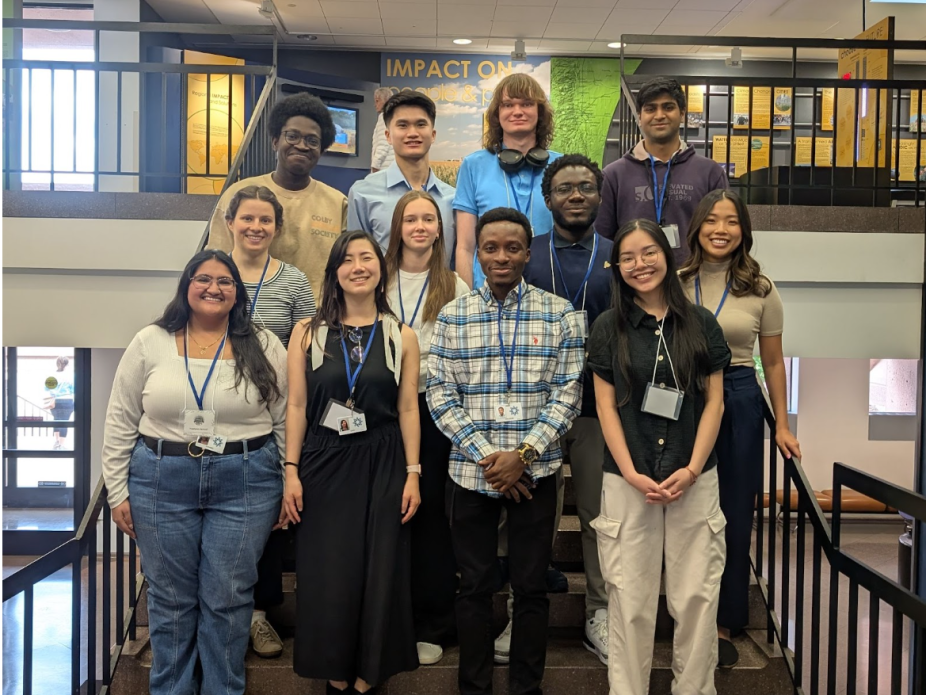SIParCS welcomes talented intern cohort for Summer 2025 projects
by Shira Feldman
The Summer Internships in Parallel Computational Science (SIParCS) program is pleased to announce the arrival of its enthusiastic and skilled group of interns for the summer of 2025. On Monday, May 19, the 12 interns arrived at the Mesa Lab in Boulder, CO, to begin their immersive summer experience.
SIParCS is sponsored by the Computational and Information Systems Lab (CISL) at NSF NCAR. Each intern will work closely with their lead and co-mentors over the 11-week program, culminating with project presentations and a poster symposium at the end of July.

The 2025 SIParCS interns at NSF NCAR's Mesa Lab.
The Summer 2025 group comprises five undergraduates and seven graduate students from various institutions across the country, including schools located in Florida, Illinois, Maine, New York, Pennsylvania, Rhode Island, Texas, Virginia, and Wisconsin. In the photo at right, the SIParCS interns are as follows:
-
Back row, left to right: Christian Okyere, Andrew Kwong, Aidan Winney, and Shilin Chhabra.
-
Middle row, left to right: Esther Gallmeier, Sofia Borukhovich, Isaac Oppong-Baah, and Angela Pak.
-
Front row, left to right: Prashansa Agrawal, Connie Chau, Adebowale Adelekan, and Minh Le.
During their first week, the interns attended the annual conference of the Rocky Mountain Advanced Computing Consortium, the RMACC Symposium—an example of the robust professional development opportunities that CISL provides throughout the internship period.
This summer, the SIParCS internship program offers a multifaceted array of projects at the forefront of Earth system science and high-performance computing. Projects will focus on optimizing next-generation supercomputing networks (specifically Derecho’s Slingshot), and on making scientific data easier to find and use, including building search tools powered by artificial intelligence and improving how researchers access data.
Other projects include infrastructure development for the geoscience resource Project Pythia; setting up affordable environmental sensors; using machine learning to track environmental changes; creating better computer tools for analyzing climate data; and improving the software used for atmospheric chemistry research.
Finally, one intern will help with the behind-the-scenes organization of the SIParCS program.
As the program unfolds, interns will gain valuable experience, contributing to cutting-edge projects and furthering their professional development. The SIParCS program continues to be a crucial platform for nurturing future scientists and researchers in computational science.